Table of Contents
Games and Projects
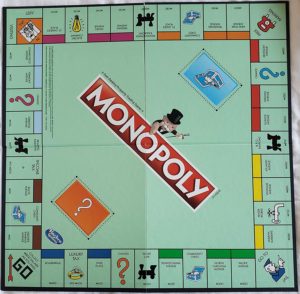 |
In Monopoly (Hasbro), a board game of which there are now multiple editions, players buy, sell, and improve upon (how many hotels can you put on Broadway?) their real estate properties, hoping to bankrupt their opponents and amass riches. For 2-6 players, ages 8 and up. |
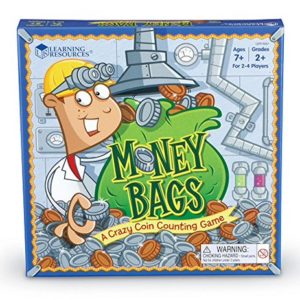 |
From Learning Resources, Money Bags (“A Crazy Coin Counting Game”) comes with a colorful illustrated board and assorted bills and plastic coins. The aim is to earn money for doing practical chores (set the table: 31 cents). For ages 6-8. |
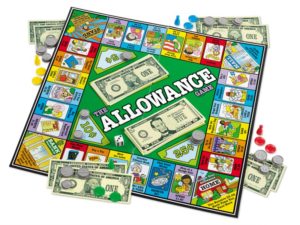 |
In The Allowance Game (Lakeshore Learning) players circle the board, earning (and paying out) money. Each time you pass HOME, you get a $3 allowance. For ages 5-9. |
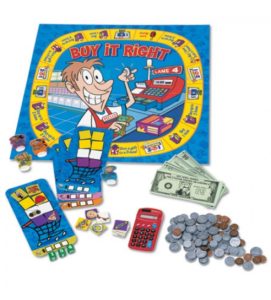 |
Buy It Right (Learning Resources) is a shopping game for ages 6 and up. Players buy and sell items (want a goldfish, a skateboard, or a lava lamp?) while clipping coupons and making change. The game includes bills, coins, and a calculator. |
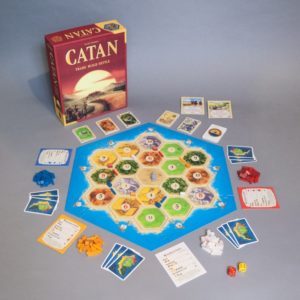 |
In Settlers of Catan, players compete to accumulate resources (wood, wheat, bricks) and build roads and settlements. A game of strategy and resource management for ages 9 and up. Many extensions are available to add extra dimensions to the game. |
|
See this annotated list of the Top 10 Economic and Money Board Games. |
|
|
From Math for Kids, Money Games has a selection of interactive online games, including a shopping game, money counting game, coin weighing game, lemonade stand game, and more. |
|
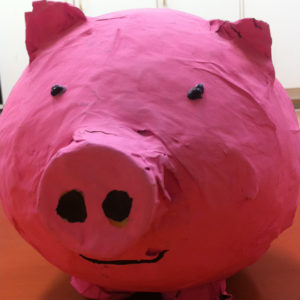 |
How to make a papier-mache piggybank. |
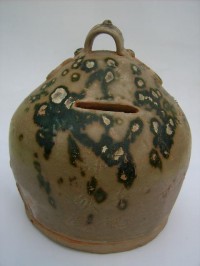 |
Piggybanks have been around for a long time. From the History Blog, check out the world’s oldest piggybanks. |
|
For much more on pigs (and piggybanks) see Perfect Pigs. |
|
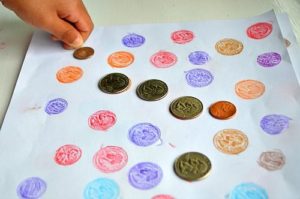 |
Make coin rubbings and play a coin-matching game. |
Money Isn’t Everything
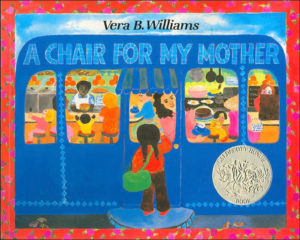 |
In Vera B. Williams’s A Chair for My Mother (Greenwillow, 2007), Rosa’s family has lost their home in a fire – and now she and her mother and grandmother are working to save money to buy a really comfortable chair. A story of community and familial support for ages 4-8. |
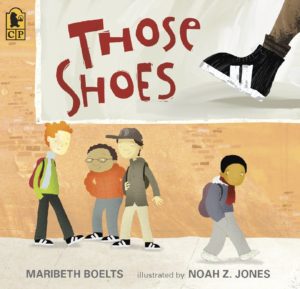 |
By Maribeth Boelts, Those Shoes (Candlewick, 2009) deals with the often difficult question of “need” versus “want.” Jeremy wants a pair of black high-top shoes like the rest of the kids at school are wearing – but his grandmother tells him that they’re too expensive, especially since he needs winter boots. Jeremy persists, and ends up with a pair of the coveted shoes from a thrift shop, even though they’re much too small for him. Then he notices that his friend Antonio’s shoes are falling apart, held together only by duct tape – and decides to give his shoes to Antonio. For ages 5-9. From the Prindle Institute for Ethics, Those Shoes is a discussion unit that uses the book to teach children philosophy, covering themes of altruism/selfishness, generosity, and distributive justice, with a long list of helpful discussion questions. |
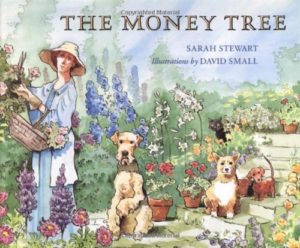 |
In Sarah Stewart’s The Money Tree (Square Fish, 1994), Miss McGillicuddy leads a happy live with her garden and animals – until a strange tree in her yard begins to sprout money in place of leaves. Soon greedy townspeople and strangers converge on the tree – until finally, as the leaves fall and winter approaches, Miss McGillicuddy cuts it down and uses the wood for her winter fire. A good discussion book for ages 5-10. |
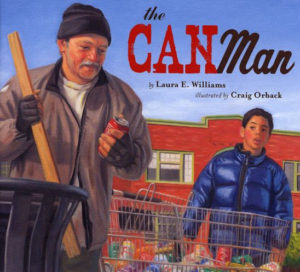 |
In Laura E. Williams’s The Can Man (Lee & Low), Tim, who wants a skateboard, is inspired by a homeless man collecting soda cans and decides to earn money by doing the same. When the Can Man helps Tim cart his cans to the redemption center, however, Tim realizes that acts of kindness are more important than skateboards. For ages 5-10. |
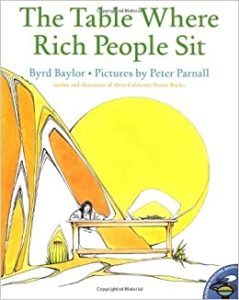 |
In Byrd Baylor’s The Table Where the Rich People Sit (Aladdin, 1998), Mountain Girl is unhappy with their scratched kitchen table and old clothes. (“I tell my parents they should get better jobs so we could buy a lot of nice new things.”) Then her parents point out the wonderful things that they have – the beauty of the mountains and canyons, the smell of rain, the starry sky – and Mountain Girl realizes that they’re really rich after all. A lovely book for ages 6-10. |
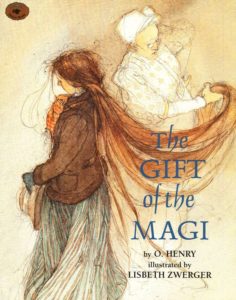 |
O.Henry’s The Gift of the Magi (Candlewick, 2008) is the story of Della – who sells her hair to buy a Christmas gift for her husband, a fob for his watch – and of Jim, who sells his watch to buy combs for Della’s hair. A beautiful story for ages 10 and up. The text is available online at Project Gutenberg, |
